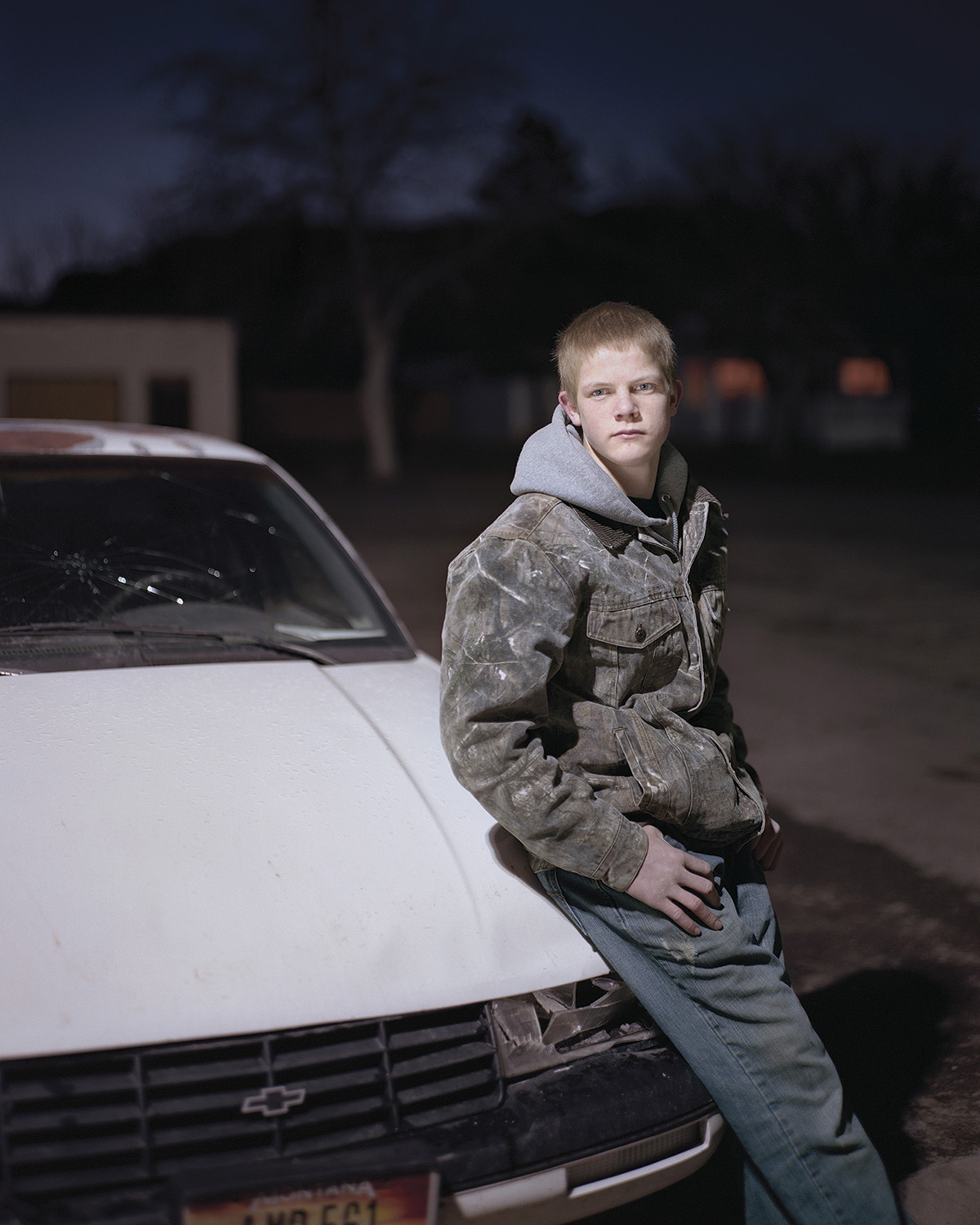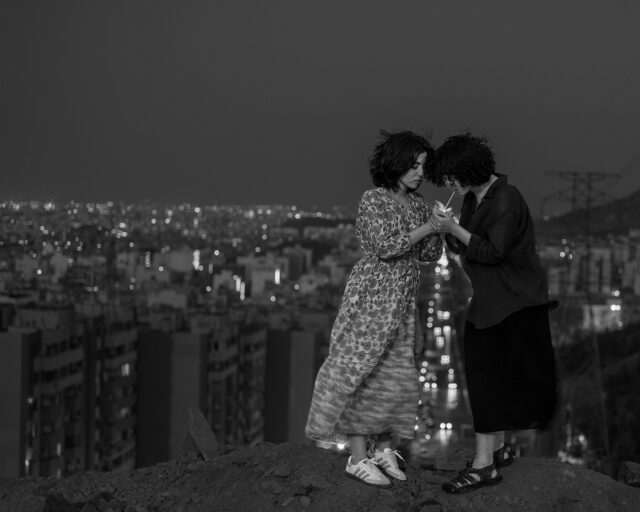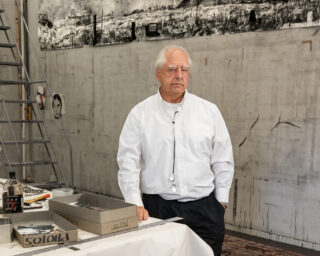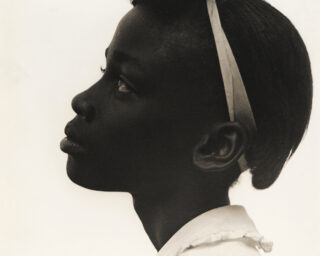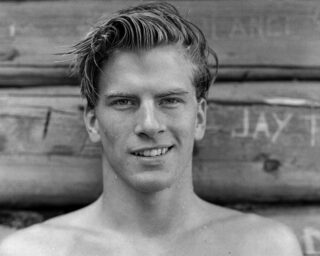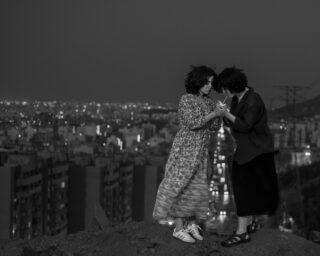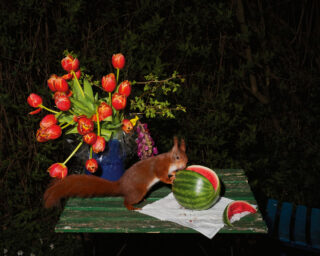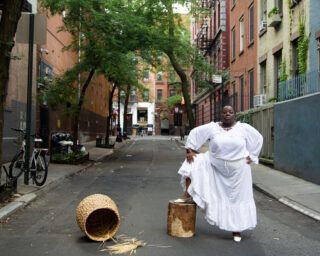Bryan Schutmaat, Perry, 2011
The great photographic explorations of the American West map the increasingly heavy hand of humankind on the American landscape, from the surveys of wilderness by Carleton Watkins and Timothy O’Sullivan to the desert dunes of Edward Weston and Ansel Adams’s rugged mountainscapes to, more recently, the scars of clearcutting and the suburban encroachment in Robert Adams’s work and stark desert bomb sites in that of Richard Misrach. The landscape itself—albeit with a few human figures for the sake of scale, or the semi-abstract traces of settlement and development—has generally taken precedence over depictions of the individual, at least up until the last thirty years. One could argue that the incorporation of portraits and the human face as an essential component in the description of the American West truly begins with Edward S. Curtis; but his subject, the American Indian, was the face of something disappearing, not arriving, settling, and digging in to make its mark. The lineage of the “real” American West more properly begins, perhaps, with Joel Sternfeld, and continues down the line with Alec Soth and Eirik Johnson, among others. And it is this generation of younger photographers, those who have fine-tuned their descriptive prowess yet seek to sprinkle in a goodly measure of subjectivity and portraiture—a helping of New Topographics combined with a modicum of the New Document, aka The New Docugraphics—who may be best able to fully capture the contemporary lessons of the American West.
In Grays the Mountain Sends, Bryan Schutmaat takes up this mantle with conviction, skillfully working a photographic vein in as much danger of over-mining as the landscapes he photographs. The images describe a series of mining sites and small, hardscrabble mountain towns. Also portrayed are the people who have worked in them, built them, and a few younger people who might—or might not—be looking for a way out of them. It’s this balance between the clearly ravaged land and equally devastated faces, with a few moments of youth, beauty, and the last glimmer of promises never truly fulfilled, that elevates Schutmaat’s work. His photographs, carefully controlled in both palette and structure, have a true regional twang. They evoke the wear and tear perpetrated on the land, as well as on the psyche of people who live there, with scant separation in one’s sense of the individuals and one’s sense of the place. If one were to map, in broad brushstrokes, the emotional trajectory of the aforementioned lineage of photographic portrayals of the American West, it would read something like this: Exaltation; Celebration backed with Cautionary Concern; Alarm and Reproach; Melancholia and Exhaustion, all of which are condensed and contained in Schutmaat’s taut and thoughtful body of work.





All photographs from the series Grays the Mountain Sends. Courtesy the artist.
Bryan Schutmaat was born in 1983 in Houston, Tex., where he later completed a BA in history at the University of Houston. He has also received an MFA in photography from the Hartford Art School in Connecticut. Schutmaat’s photographs have been widely exhibited in such venues as Center, Santa Fe, N. Mex.; Photographic Resource Center at Boston University; and Houston Center for Photography. Among the awards Schutmaat has won are the 2013 Flash Forward Emerging Photographer Award and first place at Center’s 2013 Gallerist Choice Awards.










